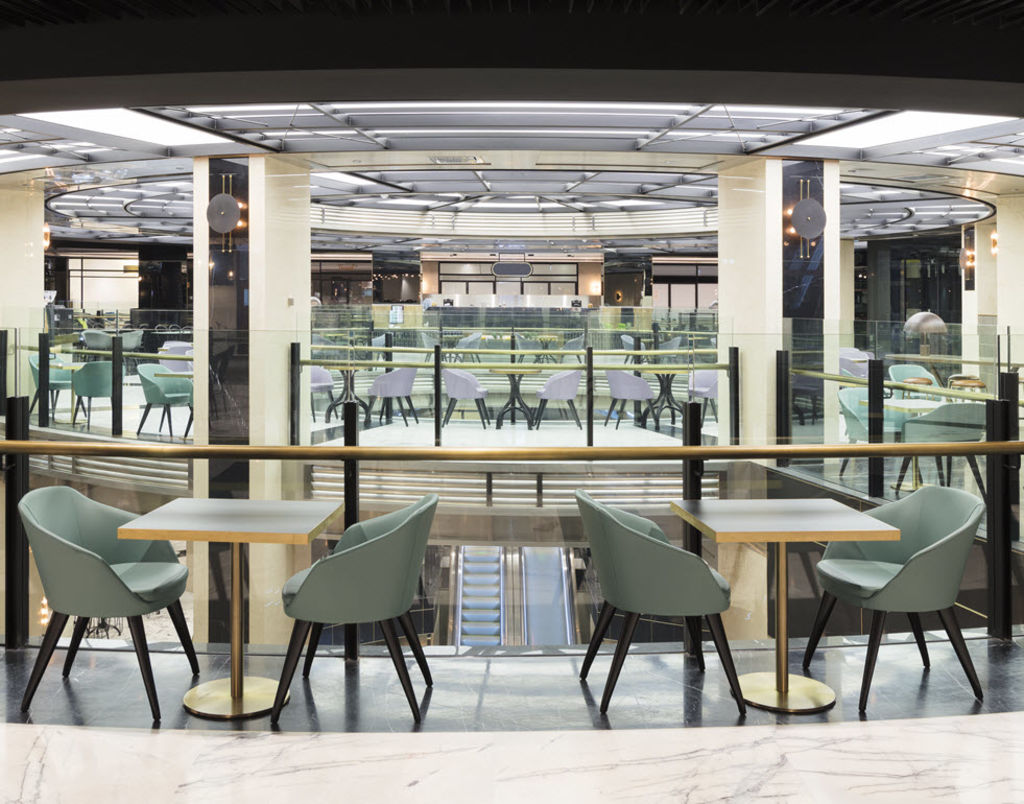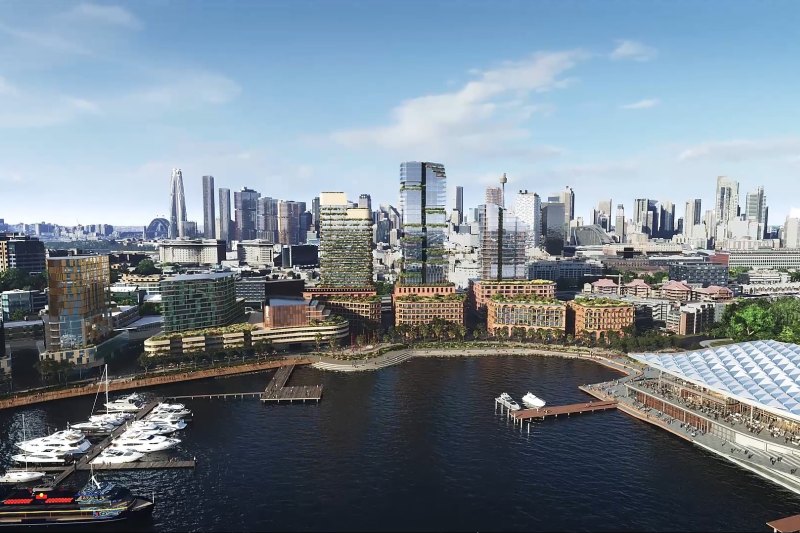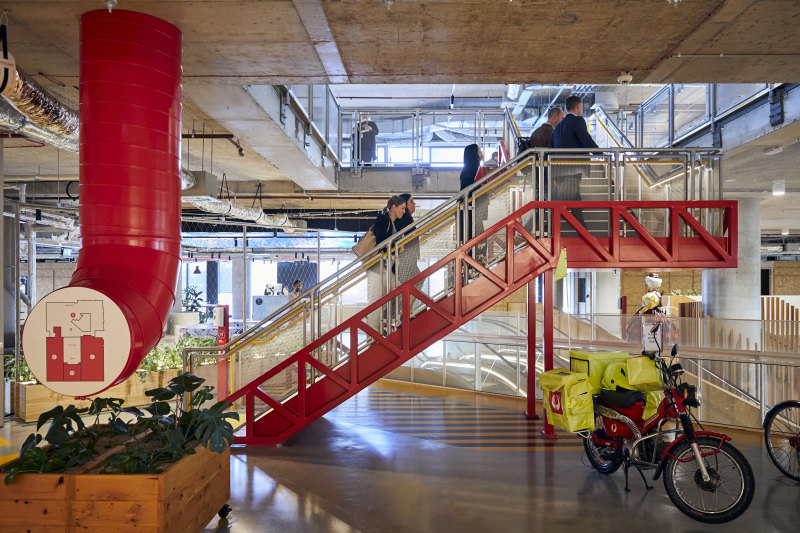
Food courts take centre stage in the battle for shoppers
The humble food court has enjoyed a complete transformation in recent years, with a move towards fine dining working to lure consumers back to shopping centres.
With the rise of online shopping, landlords and owners of these centres have turned their attention to their food offerings especially to combat this.
Shopping centre food courts are no longer afterthought, but rather the primary drawcard bringing people into these physical spaces.
CBRE director of client solutions Suzette Lamont says an increased focus on food courts and improvements to the dishes on offer is bringing people back to shopping centres.
“It makes good business sense to have food as a part of a retail space, and to make it a big part – not only because we know it keeps people off online shopping, but because it also allows customers to dwell longer,” Lamont says.
“When they dwell longer they spend more. It increases that dwell time, which is an incredibly valuable part of any landlord’s equation.”
Lamont says food courts are also given much more prominence in the centres.
“We’re definitely seeing a lot more floor space in shopping centres going into the food commitment. In the past less than 20 per cent would be for food, now we’re looking at over 25 percent, and even more in some inner city centres,” she says.
To do this, operators are moving on from the fast food outlets traditionally found in food courts to bring in world-renowned chefs and popular franchises. This was seen in the recent redevelopment of Sydney’s Chifley shopping precinct, with interior design firm SJB overseeing a transformation of its food and retail offerings.
“We were trying to create more of a smaller scale boutique, higher-end food court,” SJB director Jonathan Richards says. “It’s still a place where people can go buy a quick lunch but where the food offering and design is much more than what you’d usually expect from a food court.”
The new Chifley food court, featuring an art-deco design style, now offers food from the likes of Maria Barona and Francisco Rodriguez, Jason Roberts and Jack Fonteyn and Simon Goh.
“Compared to the past there’s certainly an amount of prestige in the idea of a food court now – you can now go to a food court and get great food, and you don’t have to take more time than you need,” Richards says. “That’s how food courts are entering a new dimension.”
This is effectively drawing consumers, especially the younger market, back to shopping centres, and away from shopping on their laptops, Richards says.
“People have to eat – you can grab that market and then draw them into the shops.
“Everyone knows that the general public are more savvy to good fresh food now but that doesn’t mean it has to be slow or fine dining.
“There’s definitely a trend towards having great operators doing faster turnover food. There are renowned chefs doing faster food that lends itself to the food court environment. That’s the way it should be.”
This is part of a growing trend of food courts offering a more tailored and personal experience for shoppers, Lamont says.
“Food courts used to have this cookie-cutter approach where as a landlord you’d put in the same style retailer in a suburban shopping centre as you would in the inner city,” she says.
“Now there’s a real understanding of who your customer is and a tailoring of that experience for the customer.”
She points to Westfield Chatswood as an example. After the owners of the site conducted research and found that a large proportion of its target market were born in Asia, the group soon transformed the food court into a hawker-inspired offering featuring some of the city’s best-known Asian franchises.
“It’s about really authenticating that food experience through knowing your market and having a real understanding of them,” Lamont says.
In Melbourne, the newly opened St Collins Lane shopping precinct features fine dining offerings in its food court, which it named The Aviary, while Eastland shopping centre now boasts offerings from George Calombaris, Movida’s Frank Camorra and Andy McMahon.
“It’s no longer acceptable to just deliver a food court experience – people want more,” Eastland Centre manager Steve Edgerton says.
This leads to more focus being placed on the actual design of food courts as well, Richards says, with a sense of cohesion and style now being sought by owners.
“There’s a trend towards actually making them really beautifully designed places,” he says.
“Now they’re more than neon lights and bright signage. Previously there were just a bunch if chairs in the middle of the space, with a McDonalds and KFC.
“Now you’ve got amazing places to eat and the furniture is beautifully designed – it has been carefully planned and curated for years.”
These food courts are designed to be an experience for consumers rather than just somewhere to grab a quick lunch, Lamont adds.
“The whole food court has become an experience in itself, somewhere you can come to enjoy not just the food but the experience of catching up with friends,” she says. “People can mix and mingle – one person has something from one restaurant and the other from somewhere else, but you all feel like you’ve come together in the space, within a cosy, warm and welcoming design.”
In turn, food courts are starting to become places to visit not just at lunch, but across the working day, with the space acting as a second office, Richards says.
“It’s a place where people can go and quickly get lunch, and where people can meet – it’s an extension of the office and can be used at any time of the day,” he says. “People who are operating the food court can create them in a way that lends themselves to being another office.”
With all the changes taking place in the food court, Richards suggests that perhaps a new name is needed.
“The food court itself is an unfortunate name – it needs a new name,” he says.
“All around the world there are examples of open food courts that are really high quality with extraordinary food. They’re much more than food courts now.”













